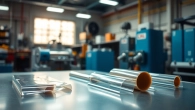
Mastering Laminating Resin for Superior Fiberglass Fabrication
Understanding Laminating Resin
What is Laminating Resin?
Laminating resin refers specifically to a type of resin used primarily in the fabrication of composite materials. These resins serve as effective bonding agents, particularly when working with fiberglass and other reinforcing materials. In essence, laminating resin acts as a matrix that binds together layers of fabric, providing structural integrity and durability to the composite material. This resin is essential for manufacturing various items, including boats, canoes, and other fiberglass-reinforced products.
Unlike general-purpose resins, laminating resin is specially formulated for optimal application in situations where a strong bond and a smooth finish are crucial. It is designed to cure in layers and often remains tacky between applications, facilitating strong adhesion across multiple coats, which is essential in processes like fiberglass lay-up. For those interested in how the chemical properties of laminating resin facilitate its applications, understanding its unique characteristics is critical.
Characteristics of Laminating Resin
Laminating resins come with various characteristics that make them suitable for a wide array of applications. Here are some of the most important traits:
– Viscosity: Laminating resins typically possess a medium viscosity, which allows them to wet out fiberglass and other reinforcements efficiently. This feature enables even distribution across surfaces, ensuring maximum adhesion.
– Curing Time: The curing time varies according to the specific formulation of the resin. Some laminating resins cure quickly, allowing for faster project turnaround times, while others may require extended periods for complete curing. Understanding these aspects aids in planning project timelines.
– Durability: These resins are designed to withstand harsh environmental conditions, including exposure to water, UV light, and temperature fluctuations. This makes them an ideal choice for marine applications and constructions exposed to the elements.
– Adhesion Properties: Laminating resins are formulated to maintain adhesive qualities when layered, which is crucial for ensuring a robust bond between multiple applications.
– Clarity and Finish: Depending on the application, laminating resins can be transparent or opaque. Those that are clear can also be pigmented for aesthetic purposes, enhancing the visual appeal of the final product.
Types of Laminating Resin
Various types of laminating resin are available, each catering to different needs and project requirements. The main categories include:
– Polyester Laminating Resin: This type is well-known for its low cost and adequate performance in marine applications. Polyester laminating resin cures to a hard finish and is commonly used in boat building. It is relatively simple to work with, making it an excellent choice for DIY enthusiasts and professionals alike.
– Epoxy Laminating Resin: Epoxy laminating resin is renowned for its superior strength and adhesion properties. It is ideal for applications requiring high-performance attributes, such as aerospace engineering and high-end marine building. Its versatility allows it to bond well with various substrates, including wood and metals.
– Vinyl Ester Resin: This type combines the advantages of both polyester and epoxy resins. Vinyl ester laminating resin offers excellent chemical resistance and lower shrinkage, making it suitable for high-performance applications, especially in the automotive and marine industries.
Applications of Laminating Resin
Marine Industry Uses
In the marine industry, laminating resin plays a vital role in fabricating boats, canoes, and other watercraft. The durability and water resistance of laminating resin make it particularly suitable for these applications. It is crucial in layering fiberglass cloth to create a robust hull, which can withstand the harsh marine environment. Additionally, laminating resin allows for the preservation of the aesthetic appeal of boat designs through clear and pigmented finishes.
Specific applications within the marine industry include:
– Fiber-Reinforced Hulls: Laminating resin is predominantly used to create the hull of boats, combining fiberglass cloth with resin to produce an incredibly strong and lightweight structure.
– Repairs and Maintenance: When repairing fiberglass boats, laminating resin is the preferred choice as it effectively bonds to existing surfaces, ensuring a smooth and durable repair.
– Molds: Laminating resin can also be used to create molds for manufacturing other marine components, ensuring precision and durability in the final product.
Construction and Repair
Beyond marine applications, laminating resin finds its way into construction and repair projects. Its strength and versatility allow it to be used in various building materials and methods.
– Composite Structures: Laminating resin can be integral in creating composite structures where lightweight materials require strength. It is commonly used in roof panels, wall panels, and other structural components that benefit from reduced weight while maintaining rigidity.
– Furniture and Finishings: Laminating resin is often applied as a coating for furniture, providing a protective layer against wear and tear while also enhancing the look of the product. This application is prevalent in the production of high-end furniture and cabinetry.
– Reinforced Repairs: Similar to its use in boat repairs, laminating resin is also effective in reinforcing damaged or weakened structures in buildings, allowing repairs to extend the life of materials significantly.
Art and Craft Projects
Laminating resin has also gained popularity in art and craft projects, where its aesthetic qualities combine with durability. Artists and crafters appreciate its versatility in creating unique pieces.
– Jewelry Making: Laminating resin is commonly used in jewelry-making projects, enabling creators to encapsulate materials, create colorful designs, and achieve a glossy finish on pieces.
– Home Décor: Many DIY enthusiasts use laminating resin to create artistic finishes on coasters, tables, and wall art, giving a polished look to their projects.
– Encapsulation: The capacity to encapsulate flowers, photographs, and personalized items in resin allows artists to create keepsakes that endure the test of time.
Choosing the Right Laminating Resin
Factors to Consider
Selecting the appropriate laminating resin for a specific project involves a careful assessment of several factors:
– Application Environment: Understand where the finished product will be used. For marine applications, for example, a water-resistant resin may be necessary, while a standard laminating resin might suffice for indoor projects.
– Project Requirements: Assess the physical demands of the application. Higher strength and chemical resistance may be required for industrial uses, leading to the selection of epoxy or vinyl ester resins instead of general-purpose polyester options.
– Skill Level: Depending on the user’s experience, some resins may be easier to work with than others. Beginners might prefer polyester laminating resin due to its relatively forgiving nature, while more experienced users could handle epoxies, which often require more precise mixing and application.
Performance Metrics
Evaluating laminating resin based on performance metrics is crucial for ensuring a successful project outcome:
– Tensile Strength: This measures the resin’s ability to resist tension. Higher tensile strength indicates greater durability and load-bearing capability, essential for many applications.
– Cure Time: Depending on the project timeline, understanding the curing time of the resin can significantly impact planning. Quick-curing options may facilitate faster project completion, while slower curing may allow for more extensive work before the resin hardens.
– Chemical Resistance: Particularly important in marine and industrial applications, the resin’s resistance to chemicals can significantly affect the longevity of the final product.
Cost vs. Benefits
When selecting a laminating resin, it’s essential to weigh the costs against the potential benefits:
– Initial Investment: Higher-quality resins, such as epoxy or vinyl ester, often come with a higher price tag. However, their durability and strength can lead to fewer repairs and replacements, ultimately saving money in the long run.
– Quality of Finish: While less expensive options may be available, consider whether a more costly resin might yield a higher-quality finish or added benefits, such as UV resistance or better adhesion properties.
– Flexibility in Use: Some resins may offer more versatility for different applications. Choosing a resin that can be used across multiple projects may justify the initial investment, providing greater overall value.
Application Techniques for Laminating Resin
Surface Preparation
Effective surface preparation is crucial for achieving optimal results with laminating resin. Properly preparing the surface ensures maximum adhesion and a smooth finish.
– Cleaning the Surface: Remove any dust, grease, or contaminants that may impair adhesion. A cleaned surface is vital for ensuring that the resin adheres well and performs as intended.
– Sanding: For better adhesion, sanding the surface can create a textured area for the resin to grip onto. Be sure to use appropriate grits to avoid damaging underlying materials.
– Moisture Check: Always assess the moisture content of the substrate before applying the resin. Higher moisture levels can lead to poor adhesion and bubbling during curing.
Optimal Application Methods
Applying laminating resin requires careful consideration of the chosen method to achieve the best results:
– Brush Application: Applying resin with a brush is one of the most straightforward methods. Ensure that the brush used has the proper bristles suitable for the chosen resin to avoid leaving streaks or bubbles.
– Roller Application: For larger surfaces, using a roller can efficiently cover wide areas while ensuring even distribution. This method minimizes the risks of leaving brush strokes or uneven finishes.
– Spray Application: Professional-grade projects might call for spray application, which can provide an even coat with minimal effort. It’s essential to note that spray applications often require more training and experience.
Post-Application Care
Caring for the resin after application is vital for ensuring its longevity and aesthetic appeal:
– Curing Process: Allow the resin to cure according to the manufacturer’s instructions. Avoid subjecting the piece to moisture or excessive heat during the curing phase, as this can lead to imperfections.
– Inspection: After curing, inspect the application for any imperfections, such as bubbles or uneven areas. Addressing these issues with additional layers of resin can enhance the final product’s final look and durability.
– Cleaning and Maintenance: For products exposed to dirt, moisture, or harsh environments, routine cleaning can prolong the resin’s life and maintain its appearance.
Safety Precautions When Working with Laminating Resin
Protective Gear
Safety should always be a priority when working with laminating resin, as the chemicals involved can pose health risks. Here are essential protective measures:
– Eye Protection: Always wear goggles or a face shield to protect against splashes during mixing and application.
– Respirators: Use a respirator mask, especially in poorly ventilated areas, to avoid inhaling fumes from the resin.
– Gloves: Employ nitrile or latex gloves to protect your skin from direct contact with the resin.
Ventilation Tips
Proper ventilation is essential when working with laminating resin to minimize the risk of inhaling harmful fumes:
– Work Outdoors: Whenever possible, carry out resin application outdoors or in open areas.
– Ventilated Spaces: If working indoors, ensure good air circulation by opening windows, using exhaust fans, or employing air purifying devices to mitigate concentrated fumes.
Handling and Storage Guidelines
Correctly handling and storing laminating resin can extend its shelf life and improve safety:
– Temperature Control: Store laminating resin in a cool, dry place, avoiding exposure to extreme heat or cold, which may affect its performance.
– Container Integrity: Ensure that the containers for laminating resin are tightly sealed to prevent moisture ingress and maintain their usability.
– Expiration Dates: Always check the expiration dates on laminating resin containers, as expired resins may not cure correctly and could lead to project failure.












Leave a Reply